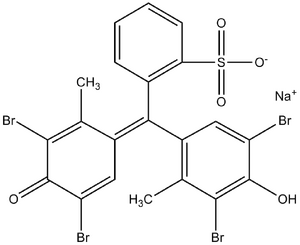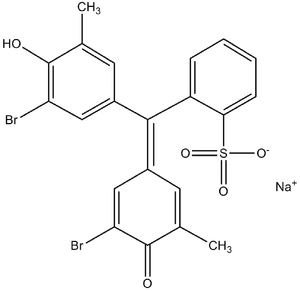Albumin/Determination
< Albumin
Deteremining the concentration of albumin in the serum is one of the widespread biochemical tests, especially suitable for liver and kidney diseases and assessment of nutritional status. A decrease in albumin can accompany chronic inflammation and an increase in catabolism in some disease states. Other causes of decreased or increased albumin concentration are similar to those of total proteins.
The principle of albumin determination[edit | edit source]
In a weakly acidic environment, albumin behaves as a cation. It can react with anionic dyes and an albumin-dye complex is formed. Binding of the dye is accompanied by a change in its color. Bonding occurs in a slightly acidic environment in the presence of surfactants.
Organic dyes are used, which react with albumin much faster than with other serum proteins. They most often contain the group -SO3H. An example can be bromcresol purple or bromcresol green.
Reference range: Serum albumin concentration (S-albumin): 35–53 g/l
More sensitive immunochemical methods (most often immunoturbidimetry) are usually used to determine albumin in other fluids, e.g. urine or cerebrospinal fluid.


